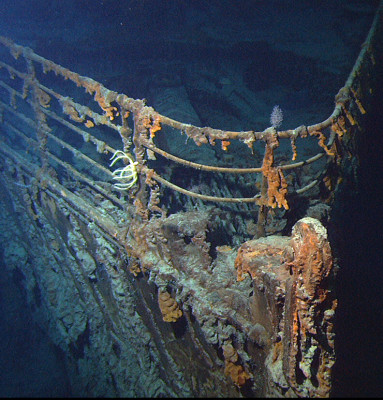
Many have wondered how the Titanic, one of the most famous shipwrecks in history, was discovered and explored. Recent tragic news about the missing Titan, a tiny submersible that was carrying 5 passengers, has sparked interest into the history of the captivating- yet dangerous- exploration of what was deemed the “unsinkable” vessel.
Q: When was the Titanic wreck first found?
A: The Titanic wreck was discovered on September 1, 1985. Dr. Robert Ballard led the expedition that made this remarkable discovery. They used a special underwater robot called the Argo to explore the deep ocean and found the Titanic about 370 miles off the coast of Newfoundland, Canada.
Q: How deep is the Titanic, and why was it challenging to explore?
A: The Titanic rests at a depth of approximately 12,500 feet (3,800 meters) below the ocean surface. Exploring the wreckage was a significant challenge due to the extreme depth. The water pressure is incredibly strong, and the temperature is extremely cold. Scientists needed specialized equipment and technology to navigate and withstand these harsh conditions.
Q: What important findings were made during the initial exploration of the Titanic?
A: The initial exploration of the Titanic revealed significant details about its tragic sinking. It was discovered that the ship had broken into two main parts—the bow and the stern—when it sank. This finding challenged the earlier belief that the Titanic had sunk in one piece.
Q: Have there been subsequent expeditions to explore the Titanic?
A: Yes, since the initial discovery, numerous expeditions have returned to explore the Titanic. These expeditions were supported by various groups and individuals, including James Cameron, the director of the Titanic movie. Each subsequent visit has contributed to our understanding of the shipwreck and provided new insights into the events surrounding its fateful voyage.
Q: How did technology play a role in exploring the Titanic?
A: Technology played a crucial role in the exploration of the Titanic. Advanced underwater robots equipped with powerful cameras and robotic arms were used to capture detailed images and retrieve artifacts from the wreck. Special sonar systems helped create maps of the area, while modern ships and submersibles enabled scientists to reach the depths of the ocean where the Titanic rests.
Q: What interesting artifacts have been discovered from the Titanic wreck?
A: Several fascinating artifacts have been recovered from the Titanic. Personal items such as jewelry, clothing, letters, and suitcases offer glimpses into the lives of the people onboard the ship. Ship components like windows, dishes, and even sections of the ship's structure have also been found. These artifacts provide a tangible connection to the passengers and crew who sailed aboard the Titanic.
Q: Is the Titanic wreck protected, and will there be further exploration in the future?
A: Yes, the Titanic wreck is protected as a memorial site under international law. Preserving the site and its artifacts is of utmost importance to honor the memory of those who perished. While future exploration may occur, the focus will primarily be on scientific research and documentation rather than salvage operations. Starting in 2021, the deep ocean tourist company, OceanGate, led its first tourist expedition to the Titanic site. The current Titan voyage would have been its 3rd. Although the company had claimed that it had completed over 50 test dives, including to depths similar to those of the Titanic, OceanGate faced a lot of criticism from industry leaders and experts about the risks and dangers involved in deep sea tourist voyages.
By BJL Staff
The Titanic: History of Exploration
Typography
- Smaller Small Medium Big Bigger
- Default Helvetica Segoe Georgia Times
- Reading Mode




